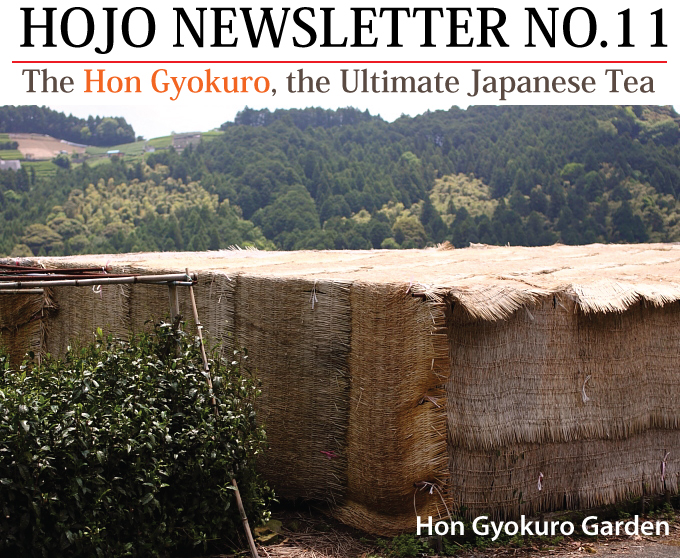
Greetings!
I am Akira Hojo from HOJO TEA SHOP. You are receiving this email because you have registered on our email list when you visited my shop at The Gardens Mall in Mid Valley City, Kuala Lumpur or you have registered on our mailing list on the website.
Recently we brought in a number of new teas. Although I am yet to set up the webpage for respective new tea, you can visit our shop at The Gardens to sample these new teas.
In previous newsletter (No.10), I wrote about Gyokuro. In this issue,
I would like to highlight a very special kind of Gyokuro, called the Hon Gyokuro.
The uniqueness of Gyokuro is about how it was grown. In spring, the Gyokuro tea garden is fully covered so that tea leaves receive less sunshine.
Nowadays, most of Gyokuro gardens are covered by black plastic sheets called "Kanreisha".
Traditionally, Gyokuro garden was covered with sheets made of rice straws. This traditionally made Gyokuro is called "Hon Gyokuro". The tea farmer usually uses the straw from their own rice fields. They gathered rice straws to produce sheets for Gyokuro tea garden. It is usually the farmer wife's job to weave straws into the sheet. Making rice straw sheets is very hard work and time-consuming. Nowadays, very less farmers practice this traditional style and they prefer to use commercial black plastic sheets. Based on my survey, now in Japan, there are less than 5% of farmers who are still producing Hon Gyokuro.
| |
|
|
| Hon Gyokuro Garden | The modern Gyokuro garden |
I believe most of those who tasted Gyokuro might have the impression that Gyokuro gives a very strong seaweed flavor with creamy texture and taste like amino acid. No doubt Gyokuro has such an overwhelming character which is hard to forget once you tasted it. Nevertheless, personally I did not enjoy those distinctive characters of Gyokuro. To me, this tea taste like a soup or some kind of astronaut food, yet it gives very weak after taste and its flavor is relatively flat if compared to many other teas that I usually enjoy.
However my perception on Gyokuro has completely changed when I tasted Hon Gyokuro for the first time. It was totally a different cup of tea from the Gyokuro that I used to know. I was very surprise to find that Hon Gyokuro gives a very deep and long lasting taste that lingers all the way down the throat. I really enjoy its thick taste and lasting sweetness. Firstly its taste goes very deep down in my throat. I can taste the thickness of taste and sweetness on my throat. The flavor of Hon Gyokuro is very intense and rich; it lingers and lasts for a long time. In addition, I could brew Hon Gyokuro over and over again, even up to nearly 10 times.
The secret behind the distinctive quality of Hon Gyokuro is due to the traditional technique tea farmers applied during the cultivation process. The rice straws that are used to cover the tea garden is very rich in minerals. When rain falls, rain drops soaked through the rice straws and water carries minerals of straw down to the ground. The minerals are then absorbed by the tea trees and accumulated inside the tea leaves. Because of Gyokuro tea trees are covered and less sunshine is received by the leaves, the growing speed of Gyokuro is very slow, thus more and more minerals are accumulated inside the tea leaves. According to the Hon Gyokuro farmer, it is essential to use the fresh rice straws. If the straw sheets are recycled to cover the garden, the quality of tea will be significantly affected as the recycled straw contains very less minerals.
Unfortunately, there are very few farmers who are willing to produce Hon Gyokuro nowadays. The reason is simple. In Japan, during the auctioning season of tea market, people pay higher price for tea that comes out early in the season. Thus, normal Gyokuro are sold at a higher price due to its timing of plucking. Normal Gyokuro grows faster and it can be ready for harvest 10 days earlier than traditional Hon Gyokuro. In Japan, anything that comes out earlier to the market gets a better price. Although this may sounds very odd, it is the culture in Japan. The quality criteria of Japanese green tea are quite upside down. From the farmers' point of view, there is no commercial value to produce Hon Gyokuro. Firstly it takes more time and effort to produce it follows the traditional method, yet they could only sell it at a much lower price in the tea auction. The only remaining farmers who produce Hon Gyokuro till now are either very eccentrically traditional farmers who strongly believe in the traditions or those who can sell their tea direct to the tea shops like us.
| |
|
|
| The fresh straw on the top is yellow in color. | Mr.Omura and his wife who produces HOJO's Hon Gyokuro |
At the moment, it is very hard to find Hon Gyokuro garden in Japan. Based on my survey, more than 95% of farmers have switched to produce normal Gyokuro. I feel that it is my duty to let our customers aware of the superior quality and rarity of Hon Gyokuro. I wish to increase the demand of this very unique tea so that the production of this ultimate and traditional Hon Gyokuro will have a chance to survive the modern times and passes on to our next generations.
In Hojo's lineup, Asahina Gyokuro is the Hon Gyokuro.
Work location: Kuala Lumpur, Mid Valley, The Gardens Mall or Office at Desa Sri Hartamas
http://www.hojotea.com/info_e/profilee.htm
1. Working Experience: Not required in particular. Fresh graduate are encouraged to apply.
Malaysia residence
2. Language: Able to write and speak both in English and Chinese
3. Able to work 2-4 days on week day
If you are interested, please send a resume to us at following email address:
![]()
We are introducing a few limited selections of "Raw Pu-erh".
These teas were selected by me when I traveled to Yunnan Province of China in spring of 2010. Most of the teas selected gives very rich and thick flavor and strong after taste.
If you still think that Pu-erh tea gives odd flavors or bitter taste, please do come to our shop to try out any of our raw Pu-erhs. I am sure these raw Pu-erhs will definitely change your perception. Like some of you, I also never like those smelly Pu-erhs. The odd flavor and funny taste of Pu-erh teas is usually caused by contamination during storage, and also if the fermentation of "ripe Pu-erh" was not carried out properly. The production of raw Pu-erh does not involve mold fermentation, but natural fermentation. The raw Pu-erh tea with right quality gives flavor like fruits or bouquet of flowers. The taste is not astringent or bitter at all.
It tastes very smooth and delicately sweet. The tea is yellowish green in color, bright and clear. When selecting the raw Pu-erh, I emphasized on the tea trees which age is more than 200 years old. Some people might wonder how can we prove that tea is really plucked from the old trees. In fact, it is a simple way to identify this. Pu-erh tea plucked from old tea trees gives a much deeper after taste and more intense flavor compared to other Pu-erh tea that is produced from either young trees or garden tea.
Some customers expressed that the flavor and taste of old-trees raw Pu-erh is very similar to fine white wine. At the moment, we are introducing raw Pu-erh made of spring crop in year 2010. This stock is very limited due to low supply of raw materials. There is a number of good health functions reported on raw Pu-erh as well. If you wish to know more, please visit our shop and find out more from our staffs.
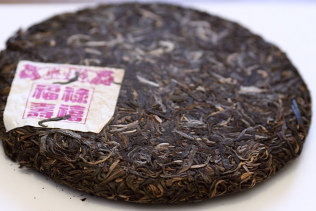 |
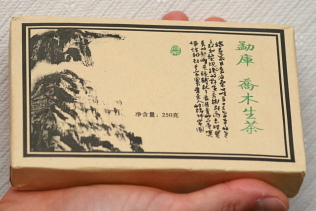 |
|
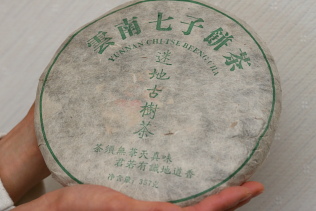 |
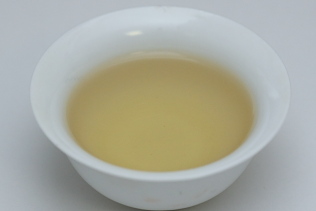 |
|
This is the color of fresh raw puerh. It is fruity and flowery. |